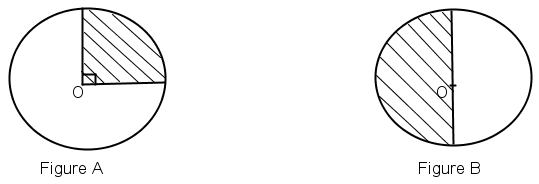Online math tutoring -
Geometric Probability
This online tutoring lesson is part of the SAT Math course I offer.
By the time you finish reading this page and watching the video, you will understand how to find geometric probability.
Geometric Probability is an important topic you need to understand as part of your SAT or other test prep. There are a few concepts involved. Let's review them.

In Figure I above, if you were to close your eyes and pick a point inside the black circle, how likely is it that the point you picked lies inside the blue circle?
I can almost hear you say "it isn't very likely" (or the probability of that happening is very low).
What if you were to do the same with Figure II?
Certainly, it's more likely that the randomly chosen point lies within the blue circle (higher probability of that happening as compared to Figure I). You don't have to be a Math expert to figure this out, right?
Get geometry homework help by chat/email
Consider the following example now:

You pick a point at random inside the circle with center O. What is the probability (or chance) that the point you pick falls within the shaded region?
Figure A - the shaded region covers a quarter of the entire circle (see the right angle symbol?). Therefore, the required probability should be one-fourths or 0.25
Figure B - the shaded region covers exactly one half of the entire
circle. Therefore, the required
probability should be one half or 0.50
Once again, this was more of common sense than anything else!
What can we conclude from the examples above?
That the probability (or chance) of the randomly chosen point falling inside the inner circle (or shaded regions) was determined by what fraction of the whole area is each one made up of. This is the basic idea of Geometric Probability.
When you review the recording below, you are reminded that the probability of something happening is always between 0 and 1 (both inclusive).
Geometric Probability
Review more recorded geometry help lessons
Did you notice that the final answer in the problem is independent of the diameter of the circle? In other words, no matter how big (or small) the circle or the square is, the required probability will always be the same if the circle touches the four sides of the square.
Your turn
A square is inside a circle so that the diagonals of the square are also diameters of the circle. If you pick a random point inside the circle, what is the probability that the point lies inside the square?
(Ans: 2⁄π)
| Home | | | Online tutoring | | | Homework help |